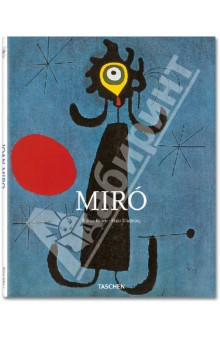Описание книги
Joan Miro is one of the most significant Spanish painters of the twentieth century. His early work clearly shows the influence of Fauvism and Cubism. The Catalan landscape also shapes the themes and treatment of these initial works. In his travels, Mirо encountered the intellectual avant-garde of his time; his friends included Francis Picabia, Tristan Tzara, Andr? Masson, Jean Arp and Pablo Picasso.
From the mid-twenties onward, Mirо strove to leave direct objective references behind and developed the pictograms that typify his style. The pictures of this period, which include perhaps the most beautiful and significant ones of his whole oeuvre, dispense with spatiality and an unambiguous reference to objects. From then on, the surfaces were defined by numerals, writing, abstract emblems, and playful figures and creatures.
The year 1944 saw the beginning of his extensive graphic oeuvre, ceramics, monumental mural works, and sculptures. In these works, too, the Catalan artist sought the solid foundation of a figurative, symbolic art with orientation as regards content: faces, stars, moons, rudimentary animal forms, letters. Joan Mirо developed in several stages his characteristic flowing calligraphic style and his world of forms resembling shorthand symbols; from Fauvism to Surrealism by way of his original childlike style, Mirо sought to shake up the establishment and made a name for himself in doing so.
